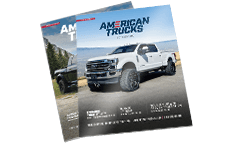
What Is Carb Exempt?
Upgrading your air intake system, installing an aftermarket exhaust and tuning with a power programmer all have the ability to boost your vehicle’s power. But did you know they might render your vehicle illegal? This could certainly be the case if you live in California or a state that adheres to the California Air Resource Board (CARB) clean air standards. But, that doesn’t mean you should scrap your street machine for a Prius, just yet. With some understanding of the CARB standard, you can keep your daily driver on the good side of the law and Mother Nature.

The CARB LAW
For years, the California Air Resources Board (CARB) has been busy trying to protect the environment. At the same time, they’ve been busy confusing performance enthusiasts. A classic example is when two performance parts seem to be identical, yet one is street legal and the other is not. How is this possible? Well, when an aftermarket accessory is designed, the manufacturer has the option to have it tested by an independent lab. If the part increases a vehicle’s emission above factory specifications, it’s considered illegal for use on public roads in states that have adopted the CARB emissions standard. Also, if the part removes or relocates a sensor, it’s not CARB-exempt. Here’s why: any shift in a sensor’s position may have an adverse effect on emissions and renders the part illegal unless the test proves otherwise.
CARB-Exempt Accessories
On the other hand, if a CARB-exempt accessory passes rigorous testing without harming emissions, it receives a CARB executive order (EO) number. These products include a sticker, metal tag or have the EO number stamped directly on them – a universal symbol stating that they’re legal. As a word of caution, before taking your car in for a smog check, be sure to have these numbers in plain view for the smog tech to see. Also, make sure to reload the factory tune if you are using a tuner or power programmer or you risk failing the test.
Exhaust headers, superchargers and turbochargers are prime examples of upgrades that seriously increase your capability and performance but can come in on both sides of CARB rules and regulations. So, it’s important to verify that the specific product you’re interested in comes with an EO number before you purchase. In order to verify whether or not a part in question is legal for use, CARB has a list of accessories and performance parts in the CARB Legal Add-on or Modified Parts Database where you can look up the part to be sure.
CARB-Certified Parts
Luckily, parts that are normally replaced at service intervals, such as oil filters, spark plugs and K&N air filters that fit in your factory air box don’t require certification. Keep in mind that while CARB-certified parts can be pricier than “off-road use only” accessories due to the testing costs, they give you the ability to enjoy your modified vehicle on public highways and roads. And, AT has a wide variety of 49-state and 50-state legal performance parts wherever you might find your vehicle is located.

